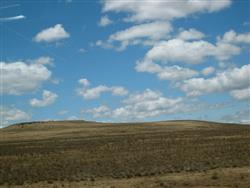What is the Likelihood of Drought Developing in Indiana?

Extreme heat and drought conditions have enveloped a huge portion of the western United States, and the latest U.S. Drought Monitor map is showing this area expanding into the north-central U.S. How likely is it that this area will expand to an already relatively dry Midwest? According to Indiana State Climatologist Beth Hall, it is still early in the growing season so a drought in Indiana is not out of the question; however, current climate models are showing that we may be spared in the short term and are showing semi-regular rainfall over the coming weeks. Things could get interesting in July though, as models are also showing above normal evapotranspiration rates, making it difficult to replenish ground and surface water.
According to Hall, the 3-month climate outlook (July through September) is slightly favoring above-normal temperatures as well as slightly favoring above-normal precipitation. “Slight” confidence means there is still some uncertainty to this forecast, and it is unclear when these conditions will occur. For instance, we may very well receive above-normal precipitation over the next 3 months, but we are unsure when that will transpire, if it happens all at once rather than spreading it out over the time period, issues may arise. This is a situation we will continue to monitor and provide resources for as things develop.
If you would like to follow along with Indiana and U.S. drought information, the Indiana State Climate Office website is available at: https://ag.purdue.edu/indiana-state-climate/
The Indiana State Climate Office (INClimate) is the state archive of official daily and hourly weather observations recorded throughout Indiana. In addition obtaining historical weather data from around the state, you can also access climate tools such as outlooks, precipitation and temperature maps, and growing degree day accumulations. INClimate was established in 1956 to document and study the climate of Indiana. Ever since, it has been catering to the needs of different users, namely individuals, businesses, and government agencies. INClimate not only assists in providing climate observations and summaries but also interprets and applies this data to solve climate related problems at hand. Primary users of Climate data belong to sectors such as agriculture, attorneys, construction, environmental monitoring, forensics, government insurance, news media, research, education and utilities.

